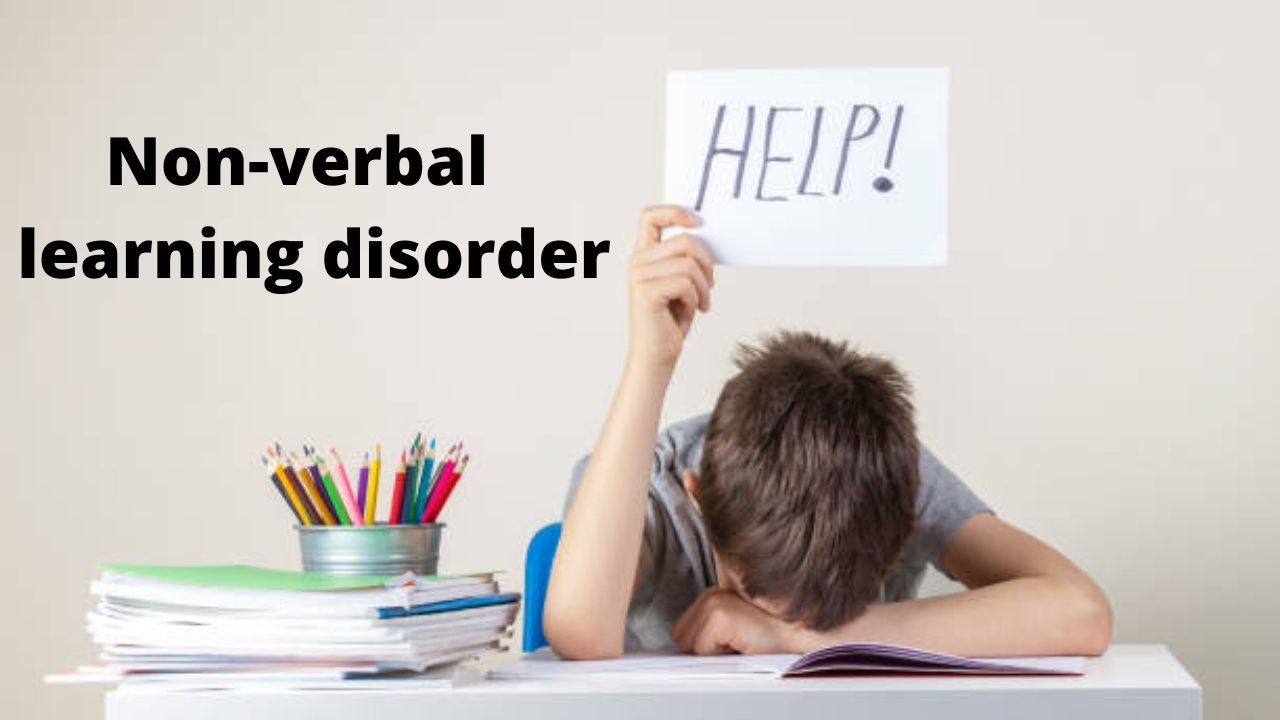What is non-verbal learning disorder?
Non-verbal learning disorder is a learning disability that causes difficulty with visual-spatial, motor and social skills. Children with Non-verbal learning disorder are often well-spoken and can write well, but struggle with subtle social cues and comprehension of abstract concepts.
Nonverbal communication plays an important role in social interactions. Understanding without words is a natural part of many interpersonal relationships. Even verbal communication is sometimes accompanied by non-linguistic signs.
For children with a non-verbal learning disorder, this form of communication often remains a mystery, since their ability to ‘read’ non-verbal signals from other people is severely restricted. In addition, the children’s coordination and spatial-visual perception are impaired by the non-verbal learning disorder.
At the same time, it quickly becomes apparent that the affected children have a pronounced talent for languages. Their reading comprehension and vocabulary are highly developed from a young age. A non-verbal learning disorder is therefore a neuropsychological syndrome that manifests itself through certain limitations and special abilities.
However, in everyday dealings with their fellow human beings and in specific learning situations, clear problems arise for children with non-verbal learning disorder. Early therapy can help children overcome these difficulties.
The diagnosis is often a challenge, especially since the phenomenon of non-verbal learning disorders is still relatively unknown in Europe. In this article, we therefore go into the symptoms of a non-speech learning disorder in more detail and describe the therapeutic measures that are intended to enable those affected to live as independently as possible.
Symptoms of non-verbal learning disorder
As the name suggests, the deficits of children with a non-verbal learning disorder are not in the area of language. On the contrary, children’s language often develops very early. Already at kindergarten age, they explore their environment mainly verbally by asking many questions on different topics.
A thirst for knowledge and highly developed language skills are initially positive qualities that many parents are proud of. These symptoms are often understood as signs of general giftedness. In the case of non-verbal learning disorder, the affected children have special abilities, but they also have deficits that require treatment. So what are the symptoms you should look for to identify a nonverbal learning disorder?
- Clumsy, clumsy movements.
- Disorder of fine motor skills (e.g. difficulty with handwriting).
- Coordination problems , which also affect balance and visual-motor coordination.
- Difficulties with spatial-visual perception.
- Strong comprehension problems with non-verbal communication/non-verbal signals.
- Problems correctly interpreting and evaluating social contexts and interactions.
- Poor adaptability to unfamiliar situations.
On intelligence tests, children with a nonverbal learning disorder score significantly higher in verbal intelligence than in action intelligence. Their difficulties lie in the area of non-verbal communication and interaction. The interpretation of other people’s facial expressions, gestures and posture represents a clear challenge for them.
Because their social interactions are characterized by their lack of understanding of body language impaired, they are sometimes isolated from their peers. In many social contexts, their behavioral problems are met with a lack of understanding.
These negative experiences favor the development of mental illnesses such as depression or anxiety disorders, which put additional stress on the children affected.
Another feature of the non-verbal learning disorder are motor skills and coordination disorders, as a result of which the children are restricted, especially in their fine motor skills. The sense of balance and spatial-visual perception are also impaired by the non-linguistic learning disorder.
The effects can already be seen when walking, running and also in more demanding movements such as cycling. In general, children with non-verbal learning disorder have a higher risk of injury.
At school, the problems in children with NLS are more visible in subjects in which their motor skills are challenged:
- Their motor limitations ensure that even simple physical activities are difficult for them (e.g. kicking a ball).
- In math class, they may have difficulty using drawing and measuring devices. Math problems are also not uncommon in children with non-verbal learning disorder.
- Handwritten notes cause problems for children because they often write with effort and slowly.
- They find it difficult to keep to lines and gaps in their work materials, which is why their book keeping often appears untidy.
- They need more time than their classmates to complete written tasks.
In addition to their deficits, however, children with non-verbal learning disorder have a clear aptitude for language. This is shown by the fact that they learn to read at a very young age and develop an extensive vocabulary. Their linguistic talent also makes it easier for them to learn foreign languages.
In everyday school life, it is generally noticeable that their difficulties worsen when they have to work quickly or have to adapt to unfamiliar situations. Therefore, although they are very inquisitive, it is not easy for them to gain new experiences. They also find it difficult to recognize connections in certain situations. In general, they pay more attention to detail than to the overall situation or overall impression.

Diagnosis of non-verbal learning disorder
The exact cause for the development of a nonverbal learning disorder is not known. Researchers suspect, however, that there is neurological damage in affected children. Whether your child has a non-verbal learning disorder can only be determined by a differentiated medical diagnosis.
Since the clinical picture is still relatively unknown in Europe, you should ideally consult a doctor who has experience with non-speech learning disorders. It should be noted that the symptoms of non-verbal learning disorder and Asperger’s Syndrome overlap, especially with regard to their social behavior.
However, not all children with non-verbal learning disorder are autistic. In order to avoid a misdiagnosis, it is best to have one in case of suspicion Consult a specialist in child and adolescent psychiatry.
The diagnosis includes thorough physical and psychiatric examinations as well as special learning and performance tests. An intelligence test must allow a distinction between verbal and non-verbal intelligence.
Because children with non-verbal learning disorder are also affected by cognitive impairments, the test must provide a breakdown that takes into account such limitations. The HAWIK intelligence test is often recommended for diagnosis.
Therapy for non-linguistic learning disorders
Although there is no cure for a nonverbal learning disorder, in many cases the symptoms of the disorder can be successfully treated. The aim of therapeutic measures is to help children to overcome everyday obstacles and to enable them to lead a successful life. A therapy concept should follow a differentiated diagnosis and be adapted to the individual needs of your child:
- Physiotherapy or ergotherapy aims to improve the children’s motor skills, coordination and perception.
- Psychotherapy (often in the form of talk therapy) helps affected children to deal with difficult situations and to increase their self-confidence and self-esteem.
- Special training in social skills helps children to appear more confident in social contexts.
Ideally, treatment of motor impairments and coordination problems should begin at preschool age. Since non-verbal communication is difficult or impossible for affected children to master, their unusual behavior in social contexts is usually noticed quite quickly by other children. Teasing and exclusion can be the result. Psychological support is therefore particularly necessary if your child appears withdrawn and anxious, shows signs of depression or is prone to temper tantrums.
Early treatment increases the chances that those affected will be able to achieve a higher degree of independence in adulthood. If the impairment is severe, therapy should be long-term to prevent the symptoms from getting worse again.
Conclusion
Children with a non-verbal learning disorder are usually unable or only partially able to correctly understand non-verbal signals and signs. Their social skills are significantly limited, making it difficult for them to socialize. Furthermore, the motor coordination and sense of balance of children with non-verbal learning disorder are noticeably impaired. On the other hand, affected children show pronounced language skills. They learn to speak and read early, show an increased urge to talk, and explore their surroundings less through touch or visual perception than through inquiry.
Although there is no cure for a nonverbal learning disorder, the symptoms can be alleviated with therapy. Physical or occupational therapy can help correct fine motor difficulties and improve balance and coordination. In turn, behavioral therapy can strengthen social skills. Different treatment methods should enable children to cope with their impairments in everyday situations and in learning.
